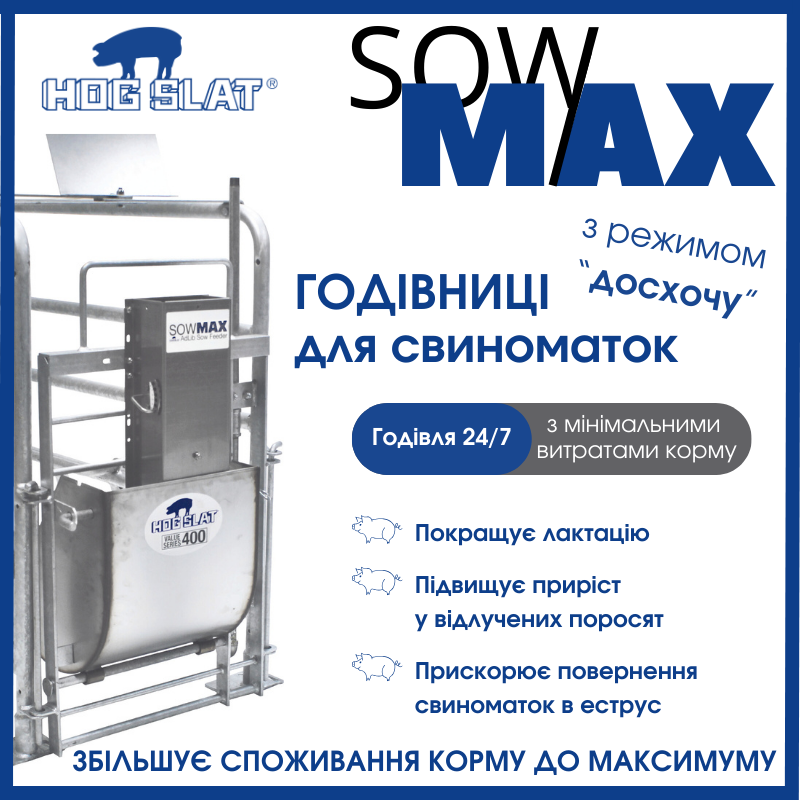During cold periods, the incoming air must be mixed with the housing air before reaching the animals to avoid exposing them to drafts. The ventilated air ensures air movement around the animals in warm periods and creates a comfortable cooling effect.
Air inlets have a significant influence on the air movements in the house – much higher than the influence of the exhaust units.
Several things affect the air entering the house, including inlet type, placement, direction, air quantity, air velocity, and air temperature. This article will elaborate on eight of the most important factors.
In an ideal setup, the outside air enters the house through wall or ceiling inlets and circulates to the center of the house before it is exhausted through fans in the roof, wall, or house end. The outside air gradually mixes with the existing house air and reaches a comfortable temperature and air velocity before reaching the animals on the floor.
 1. Width of the house
1. Width of the house
If a house is very wide, the air will have a hard time reaching the center of the house before dropping to the ground. It can cause drafts and a temperature difference on the floor, causing the animals to avoid certain areas while huddling together in other areas.
 2. Number of inlets
2. Number of inlets
It is preferable to have a well-distributed number of relatively small inlets compared to fewer large inlets to get the optimal air distribution in the house.
3. Placement height
The placement height of wall inlets affects how the air is distributed in the house. The air tends to adhere to surfaces (coanda effect), making it move easier, smoother, and further when it travels along a wall or ceiling compared to floating freely in the middle of a house.
The video shows the difference in air movement between a low-positioned and a high-positioned wall inlet.
Low – 138 cm from the ceiling: The airflow is obstructed when it enters the house, causing it to drop relatively close to the inlet wall and circle in the corner above the inlet.
High – 38 cm from the ceiling: The air moves along the ceiling far into the house while it mixes with the housing air before it moves toward the animals' occupational zone. It is considered the ideal air movement because the outside air is gradually tempered, and the velocity is slowed down before reaching the floor with the animals. Thus, the risk of unwanted drafts is reduced significantly.
4. Obstacles in the ceiling
Obstacles in the ceiling, such as beams/purlins, light rigs, and feeding lines, can significantly influence the air distribution in the house. As mentioned above, air prefers to travel along a smooth surface, and obstacles in the ceiling can disturb the airflow and have a negative effect on the air distribution in the house.
This video shows how purlins in the ceiling affect the airflow when it enters the house. Please notice the difference in the airflow when covering up one, two, or all purlins.
 5. Different openings
5. Different openings
Advanced inlet control causes fewer but stronger air currents.
At minimum ventilation, it is better to have one large opening than three small openings as it improves the ability to control air currents.

6. Air direction baffle
An air direction baffle (marked in red) is an extension to an inlet and can be angled to help the air move in the right direction along the ceiling.
 7. Angle of air inlet
7. Angle of air inlet
The angle of the inlet can help direct the air current into the house. It is preferred to use inlets that are recessed/built into the wall instead of inlets aligning with the wall. Recessed inlets are designed to reach the ceiling in an obtuse angle and help the air current get far into the house. Meanwhile, inlets aligning with the wall tend to direct the air upward, causing it to make an abrupt turn when it hits the ceiling and then drop as a cold draft.

8. Sides of the air inlet
Inlets aligning with the wall tend to "leak" air through the sides, meaning that the airflow is obstructed already when entering the house. It can be avoided with recessed inlets where the wall covers the sides.

9. Airtight inlets
When air inlets are closed, they must be airtight. It avoids draught or false air intake and enables the necessary negative pressure to create the correct air movement in the house.
In tropical areas with Combi-Tunnel ventilation, leaky inlets will cause uncooled air to enter the house, ultimately raising the temperature and decreasing the air velocity in tunnel mode.
In colder areas, leaky inlets can cause drafts on the animals and condensation and ice formations on the inlets.
LLC "AgroClimate Ukraine":

2 660 Kyiv, Ukraine;
19, Yevhen Sverstyuk Street, office 914

+38 067 386 26 91, +38 829 52 62, +38 067 537 36 67

volodymyr.brovchenko15@gmail.com





.jpg)